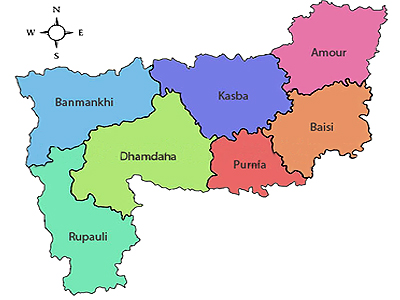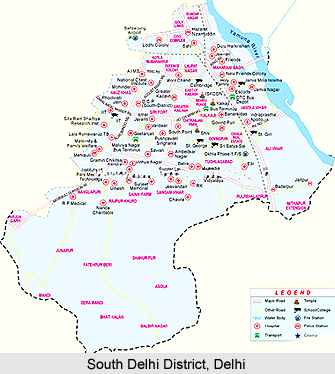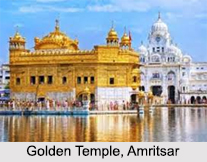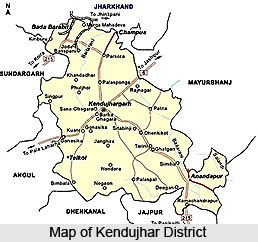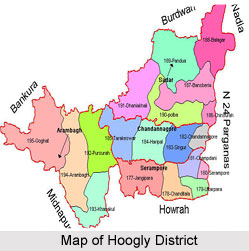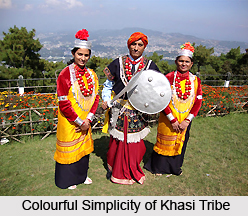 Culture of East Khasi Hills District is basically tribal in nature. This district of Meghalaya is mainly inhabited by Khasi tribe. Khasis residing in Jaintia hills are now better known as Jaintias. They are also called Pnars. Khasis occupying the northern lowlands and foothills are generally called Bhois. Those who live in the southern tracts are termed Wars. Again among the Wars, those living in the Khasi Hills are called War-Khasis and those in the Jaintia Hills, War-Pnars or War-Jaintias. In the Jaintia Hills we have Khyrwangs, Labangs, Nangphylluts, Nangtungs in the north-eastern part and in the east. In the Khasi Hills the Lyngngams live in the north-western part.
Culture of East Khasi Hills District is basically tribal in nature. This district of Meghalaya is mainly inhabited by Khasi tribe. Khasis residing in Jaintia hills are now better known as Jaintias. They are also called Pnars. Khasis occupying the northern lowlands and foothills are generally called Bhois. Those who live in the southern tracts are termed Wars. Again among the Wars, those living in the Khasi Hills are called War-Khasis and those in the Jaintia Hills, War-Pnars or War-Jaintias. In the Jaintia Hills we have Khyrwangs, Labangs, Nangphylluts, Nangtungs in the north-eastern part and in the east. In the Khasi Hills the Lyngngams live in the north-western part.
Culture of East Khasi Hills District is basically reflected by the traditions, religious beliefs and ways of living of the tribal communities. Traditional Khasi male dress is `Jymphong` or a long sleeveless coat without collar. Khasi traditional female dress is rather elaborate with several pieces of cloth. On ceremonial occasions, they wear a crown of silver or gold on the head. Like the other tribes in the north-eastern region of India, among the Khasis also use of rice-beer is a must for every ceremonial and religious occasion. They have a matrilineal society.
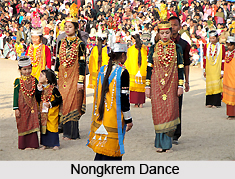 Khasis follow a matrilineal system of inheritance. In the Khasi society, it is only the youngest daughter or `Ka Khadduh` of a family who is eligible to inherit the ancestral property. Among the War-Khasis, however property passes to the children, male or female, in equal shares but among the War-Jaintias, only the female children get the inheritance. Marriage within a clan is a taboo. Rings or betel-nut bags are exchanged between the bride and the bridegroom to complete the union.
Khasis follow a matrilineal system of inheritance. In the Khasi society, it is only the youngest daughter or `Ka Khadduh` of a family who is eligible to inherit the ancestral property. Among the War-Khasis, however property passes to the children, male or female, in equal shares but among the War-Jaintias, only the female children get the inheritance. Marriage within a clan is a taboo. Rings or betel-nut bags are exchanged between the bride and the bridegroom to complete the union.
Music, crafts and costumes form an integral part of the culture of East Khasi Hills District. Khasis and Jaintias are particularly fond of songs praising the nature like lakes, waterfalls, hills, etc. and also expressing love for their land. They use different types of musical instruments like drums and instruments similar to guitars, flutes and pipes. Weaving is an ancient craft of the tribals of this region - be it weaving of cane or cloth. The Khasis are famous for weaving cane mat, stools and baskets. The Khasis have also been involved in extracting iron ore and then manufacture domestic knives, utensils and other warfare weapons using it.
Culture of East Khasi Hills District is also characterized by different festivals and their celebrations. `Nongkrem Dance` is a religious festival celebrated by the Khasis as a gesture of thanksgiving to Almighty God for good harvest, peace and prosperity of the community. It is held annually during October or November. Another most important festival of the Khasis is `Ka Shad Suk Mynsiem` or Dance of the joyful heart. It is an annual thanksgiving dance held in Shillong in April. This festival lasts for three days. Thus, it can be said that the culture of East Khasi Hills District is quite unique and vibrant.


